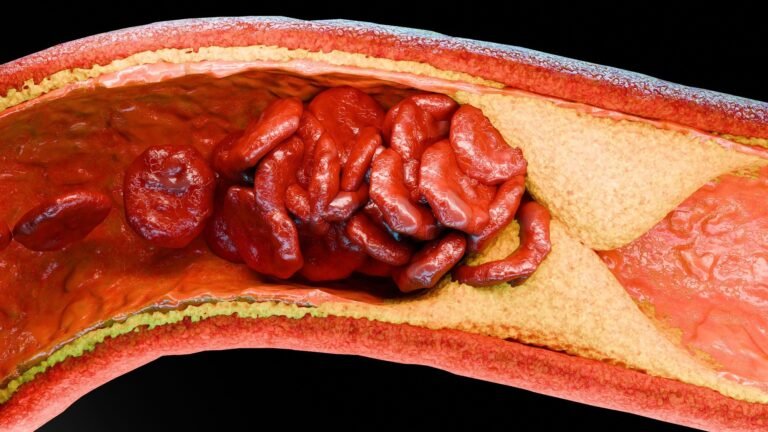In a recent study published in the journal JACC Advances, investigators in the United States examined the presence of coronary atherosclerosis using coronary computed tomography angiography (CCTA) in asymptomatic adults without traditional risk factors based on levels of low-density lipoprotein cholesterol (LDL-C), non-high-density lipoprotein cholesterol (non-HDL-C), and apolipoprotein B (apoB). They found that coronary atherosclerosis is common and the prevalence increases with increasing levels of atherogenic lipoproteins, even in low-risk adults without traditional risk factors.
Study: Serum lipoproteins are associated with coronary atherosclerosis in asymptomatic US adults without traditional risk factors. Image Credit: ALIOUI MA / Shutterstock
Record
Atherosclerotic cardiovascular disease (ASCVD) is a major cause of mortality worldwide, mainly due to coronary atherosclerosis, which is known to have an early onset and progress over time. Elevated LDL-C is a major cause of ASCVD, and lowering LDL-C is crucial for prevention. Historically, LDL-C ≥160 mg/dL was considered elevated, while <100 mg/dL was considered optimal. However, these levels may still be insufficient to prevent atherosclerosis or ASCVD. In addition, non-HDL-C and apoB are strong predictors of ASCVD but are rarely assessed in asymptomatic populations. There remains a lack of evidence regarding the relationship between these lipoproteins and coronary atherosclerosis in adults without clinical ASCVD or other risk factors. Therefore, the investigators in the present study investigated the association between subclinical coronary atherosclerosis and atherogenic lipoproteins in asymptomatic, middle-aged US adults without traditional ASCVD risk factors. They hypothesized a potentially important association and aimed to enhance primary diagnostic and preventive strategies used against the condition.
About the study
The data in the present study come from the Miami Heart (MiHeart) study. A total of 1,033 participants from the 40-65 age group and without clinically symptomatic CVD or lipid-lowering therapy were included, with a subgroup of 184 participants having optimal risk factors. People with high-risk conditions such as obesity, high creatinine levels, asthma, cancer or pregnancy were also excluded. The median age of participants was 51 years, 42.1% of them were non-Hispanic White, and 55% were female. Data on demographics, clinical history, and CCTA imaging were obtained. Coronary atherosclerosis was diagnosed using the Agatson method and American Heart Association classification. The study examined the potential association of non-HDL-C, LDL-C, and apoB with coronary atherosclerosis, significant stenosis, coronary artery calcification, and high-risk plaque characteristics. Statistical analysis included the use of t-test, chi-square test, Fisher’s exact tests, and logistic regression models with forward stepwise selection.
Results and discussion
The study cohort had median serum LDL-C, non-HDL-C, and apoB levels of 125, 144, and 94 mg/dL, respectively. The majority of participants had a lower predicted 10-year ASCVD risk, with over 86% having a risk of <5%. Men showed higher body mass index, atherogenic lipoprotein levels and risk of ASCVD compared to women. Approximately 35.9% of participants without traditional ASCVD risk factors had coronary plaque, and the prevalence of coronary and calcified plaque was found to increase progressively with non-HDL-C, LDL-C, and apoB levels. Men showed higher plaque rates and more high-risk characteristics than women. In addition, coronary plaque was observed to become more common with advancing age in both men and women. Multivariate analyzes showed that higher atherogenic lipoproteins, age, male sex, and high lipoprotein(a) were significantly associated with coronary plaque.
In the optimal risk factor subgroup, 21.2% had coronary plaque but less often had severe or high-risk plaque features. Increased age and male gender were observed to be the main predictors of coronary atherosclerosis. At the same time, higher levels of non-HDL-C, LDL-C and apoB were found to remain positively associated with coronary plaque. However, these associations were not statistically significant in this smaller group.
The study is strengthened by its large, community-based cohort of asymptomatic adults, its detailed assessment of both non-calcified and calcified coronary plaque using CCTA, and its focus on a wide range of atherogenic lipoproteins and high-risk plaque characteristics. However, the study is limited by single-site data collection, lack of information on diet and activity, a potentially underpowered subgroup of optimal risk factors, the non-representative sample, and the absence of longitudinal clinical outcomes.
conclusion
In conclusion, the study suggests that among asymptomatic, apparently healthy, middle-aged US adults without traditional ASCVD risk factors, coronary atherosclerosis is common even at serum cholesterol levels considered normal. The prevalence of the condition increases with higher LDL-C, non-HDL-C and apoB. Despite the relatively rare high-risk plaque characteristics of this population, healthcare professionals should consider lowering serum atherogenic lipoproteins through diet, lifestyle changes, or medication to potentially prevent or delay coronary atherosclerosis and improve health outcomes their. In the future, studies could focus on the best timing for risk assessment, the role of adjunctive imaging, and the use of lipid-lowering therapy in low-risk adults.
Our new study at @JACCJournals : Are LDL-C/non-HDL-C/apoB associated with coronary atherosclerosis in low-risk, otherwise healthy US adults without HTN, diabetes, or tobacco use?
— Kamil Faridi MD MSc (@kfaridiMD) August 5, 2024
These findings underscore the importance of lipid-lowering strategies to prevent the development and progression of atherosclerosis—regardless of risk factors. LDL-C, non-HDL-C, and apoB matter even for the healthiest adults.
— Kamil Faridi MD MSc (@kfaridiMD) August 5, 2024
